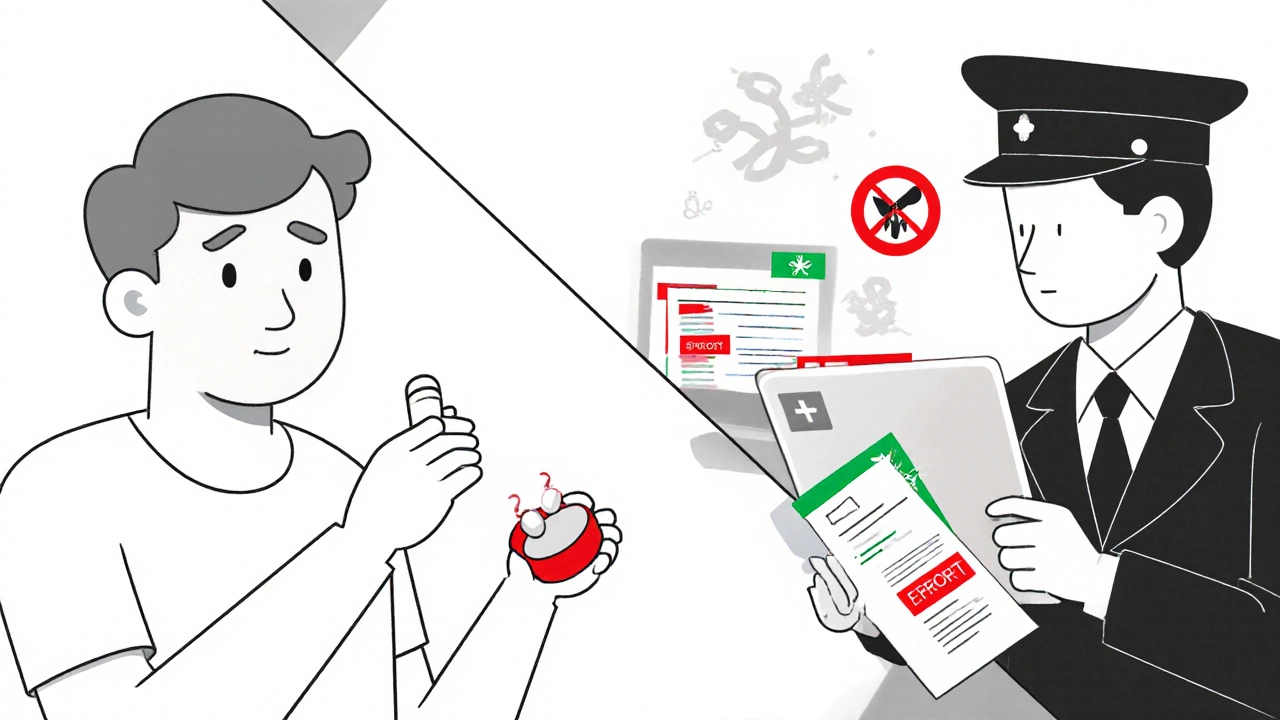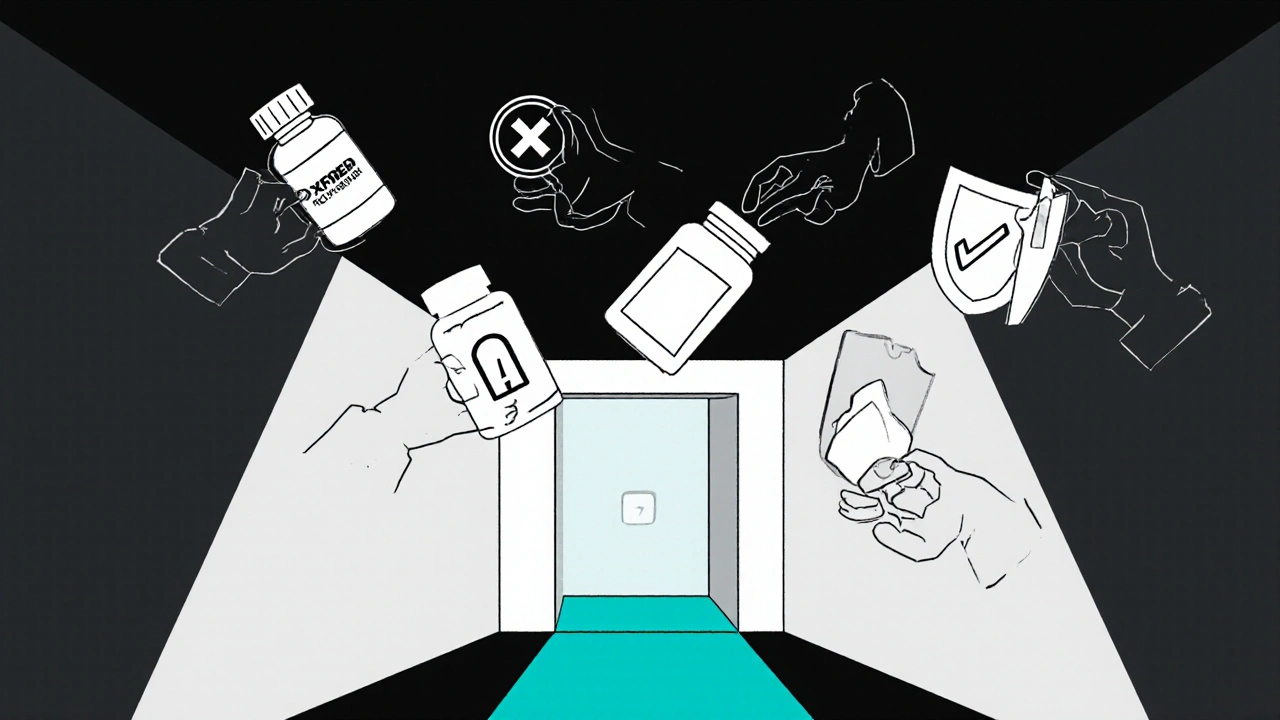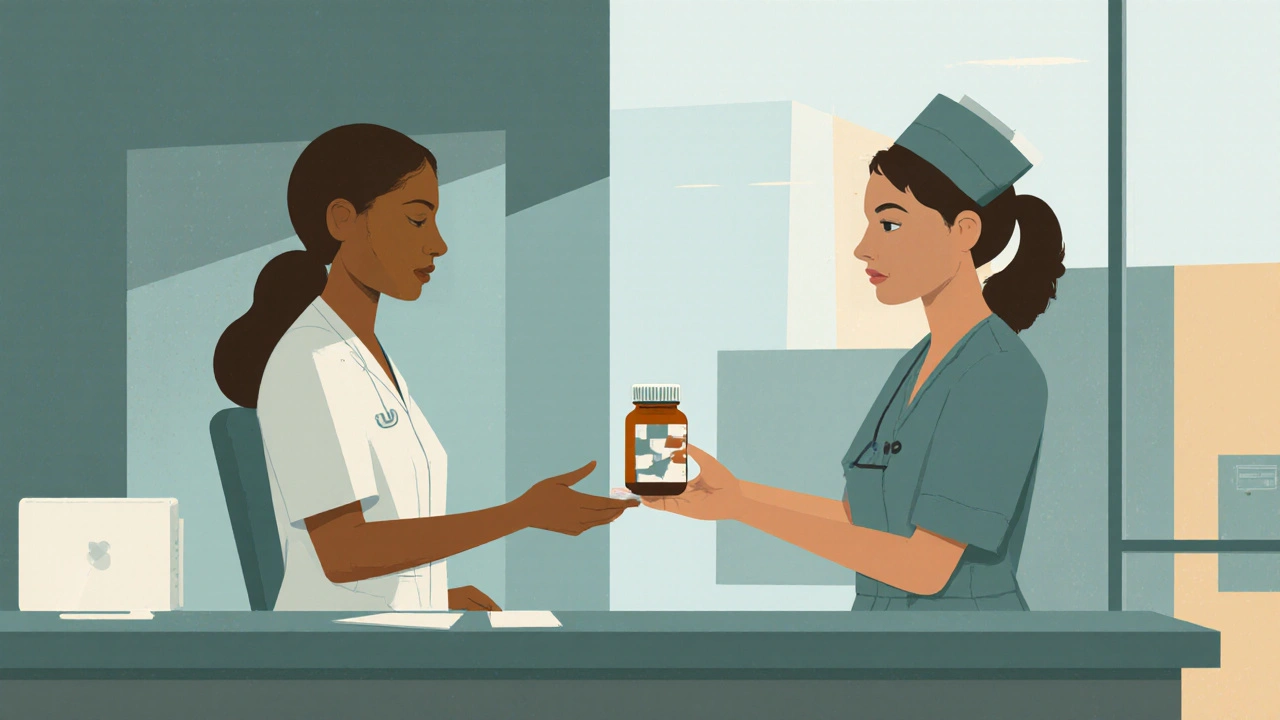Something doesn’t feel right with your prescription. Maybe the pill looks different. Or the dose your pharmacist gave you doesn’t match what your doctor wrote. Maybe you took it and felt dizzy, nauseous, or worse. You’re not imagining it. And you’re not overreacting. Reporting a medication safety concern isn’t just your right-it’s one of the most important things you can do to protect yourself and others.
Clinics across the U.S. have systems in place specifically for this. They’re not meant to blame you or punish staff. They’re built to catch mistakes before they hurt someone. In fact, research shows that 87% of preventable medication errors are caught through internal clinic reports before they ever reach the patient. That’s not luck. That’s a system working.
What Counts as a Medication Safety Concern?
You don’t need to be a doctor to know something’s off. If you see, hear, or feel anything that seems wrong with your medication, it’s worth reporting. Here’s what to look for:
- The pill color, shape, or imprint doesn’t match what you usually get.
- The dosage is different from what your doctor prescribed-like getting 10 mg instead of 5 mg.
- You were given the wrong medication entirely.
- You were told to take it at the wrong time, with the wrong food, or with a drug that shouldn’t be mixed.
- You experienced side effects you weren’t warned about, especially if they’re severe.
- You received medication that’s expired, damaged, or smells odd.
- A pharmacist or nurse made a mistake while handing it to you, like misreading the label.
Even if nothing bad happened yet, if you think an error could have happened, report it. These are called “near-misses.” They’re just as important as actual errors because they help clinics fix problems before someone gets hurt.
Where and How to Report
Most clinics have a clear, simple way to report. You don’t need to fill out a form online or wait for an appointment. Here’s how to do it right away:
- Go to the front desk. Tell the receptionist you need to report a medication safety concern. They’ll connect you with a nurse or safety officer.
- Speak to a nurse. Nurses are trained to handle these reports. They’ll ask you questions, write down details, and make sure it gets logged.
- Use your patient portal. Many clinics let you submit reports through their secure online portal. Look for a tab labeled “Safety Report,” “Report an Error,” or “Feedback.”
- Call the clinic. If you’re not near the office, call and ask for the Patient Safety Officer. That’s a real role-every accredited clinic has one.
You don’t have to be formal. Just say: “I think there was a mistake with my medication, and I want to report it.” That’s enough to start the process.
What Information to Have Ready
The more specific you are, the faster they can fix the problem. Bring or be ready to share:
- The name of the medication (brand or generic).
- The prescribed dose (e.g., “5 mg twice daily”).
- The actual dose you received (e.g., “They gave me 10 mg”).
- The date and time you got the medication.
- Any symptoms you experienced after taking it.
- A photo of the pill or packaging if you still have it.
- The name of the provider or pharmacist involved (if you know it).
Don’t worry if you don’t have all the details. Just give what you can. They’ll follow up.

What Happens After You Report
Once you report it, the clinic doesn’t just file it away. Here’s what happens next:
- They acknowledge it within 2 hours. Most clinics send an email, text, or call to confirm they got your report.
- A safety officer reviews it within 72 hours. This person isn’t your doctor-they’re trained to analyze how errors happen, not who made them.
- They investigate the root cause. Was it a mislabeled bottle? A rushed refill? A confusing electronic order? They look at the system, not the person.
- They fix the system. Maybe they changed how labels are printed. Or added a double-check step for high-risk meds. Or trained staff on look-alike drugs.
- You get feedback. A good clinic will reach out within a week to explain what they found and what they changed. If they don’t, ask for it.
Studies show patients who get this follow-up are 74% more satisfied with their care. It’s not just about being polite-it’s about trust.
Why This Matters More Than You Think
Reporting isn’t just about your own safety. It’s about stopping the same mistake from happening to someone else.
Take the case of a clinic in California that missed an insulin dosing error. The patient reported it, but the clinic didn’t log it internally. Two weeks later, another patient got the same wrong dose. By the time the state board stepped in, three people were hospitalized. That’s preventable.
On the flip side, clinics like Mayo Clinic’s “Speak Up” program saw a 210% increase in patient reports-and a 37% drop in actual medication errors-just by making it easy and safe to speak up.
When you report, you’re not causing trouble. You’re helping them fix what’s broken.

What If They Don’t Take You Seriously?
Some clinics still treat these reports as complaints, not safety alerts. If you’re brushed off, ignored, or told to “just call the FDA,” here’s what to do:
- Ask to speak with the Patient Safety Officer by name. That’s their job.
- Say: “I’m reporting this under the Patient Safety and Quality Improvement Act. I expect a response within 24 hours.”
- If they still don’t respond, write a formal letter to the clinic director. Keep a copy.
- If the issue is serious (like a life-threatening error), you can report it to the FDA’s MedWatch program-but that’s a last resort. Internal reporting is faster and more effective for fixing the system.
Remember: You have legal rights. The Patient Safety and Quality Improvement Act of 2005 protects your report from being used against you or the staff. It’s confidential. It’s protected. And it’s meant to be used.
What’s Changing in 2025
Things are getting better. Thanks to the 21st Century Cures Act, every electronic health record system now has to include a standardized way to report medication errors. That means faster, more accurate reporting.
More clinics are using mobile apps to let patients report errors in real time. Some are even using AI to spot patterns-like if a certain drug keeps being mislabeled. And by 2026, the federal government is funding $250 million to help small clinics get these systems up and running.
But progress depends on you. Right now, only about 14% of medication errors are reported. That means 86% go unnoticed. Your report could be the one that changes everything.
Final Thought: Speak Up
You know your body. You know your meds. If something feels wrong, trust that feeling. Reporting a medication safety concern takes five minutes. It might save your life-or someone else’s.
Don’t wait for someone else to notice. Don’t assume it’s “just a small mistake.” Small mistakes become big ones when no one speaks up.
Your clinic needs you to report. Not because they’re failing-but because they care enough to fix what’s broken.







Denny Sucipto
November 18, 2025 AT 06:50Man, I wish more people knew this. My grandma almost got a double dose of blood pressure meds last year because the label was smudged. She didn’t say anything ‘cause she didn’t want to ‘cause trouble.’ Turns out, the clinic fixed their printer system because of her report. She’s 82 and still too humble to take credit. You guys? Don’t be like her. Speak up.
Iska Ede
November 19, 2025 AT 12:1187% of errors caught internally? Cool story. So why do I still get pills in bottles labeled ‘Take 2x daily’ when the script says ‘Take 1x daily’? Someone’s clearly not reading their own stats.
steffi walsh
November 19, 2025 AT 15:33THIS. I reported a mislabeled antibiotic last year and they sent me a handwritten note from the pharmacist saying ‘thank you for keeping us safe.’ I cried. Like, actual tears. We’re not just patients-we’re part of the team. Keep doing this, people. You’re changing things.
Holly Powell
November 19, 2025 AT 17:22While the intent is commendable, the piece fundamentally conflates patient-reported anomalies with clinically validated adverse events. The statistical claims lack peer-reviewed sourcing, and the operational workflow described is inconsistent with Joint Commission guidelines regarding non-urgent safety reporting protocols. This is well-intentioned but dangerously oversimplified.
Riohlo (Or Rio) Marie
November 19, 2025 AT 19:06Oh sweet mercy, another ‘you’re a hero for speaking up’ pamphlet. Let’s be real-you’re not some noble whistleblower. You’re just the person who finally noticed the pharmacist gave you metformin instead of lisinopril. The system should work without you having to be a detective. And if you need a ‘Patient Safety Officer’ to report a pill mix-up? That’s not a feature. That’s a fucking indictment.
Conor McNamara
November 21, 2025 AT 11:39theyre watching you. i reported a wrong pill once and next week my insurance rates went up. theyre linking your reports to your medical profile. they know who’s ‘trouble.’ dont trust the portal. call. paper. snail mail. they cant track that. i saw it on a forum. its real.
Emanuel Jalba
November 23, 2025 AT 09:27MY MOM GOT THE WRONG MEDS AND NO ONE DID ANYTHING!! I’M SO ANGRY I COULD SCREAM!! 🤬 WHY IS THIS EVEN A THING?? I HOPE THEY GET FIRED!! I’M TAKING THIS TO THE NEWS!!
Heidi R
November 25, 2025 AT 01:02You didn’t bring a photo? Then you didn’t really have a concern. If you can’t document it, it didn’t happen. Don’t waste their time.
steffi walsh
November 26, 2025 AT 16:17Wow. So now we need a lab report to report a pill that looks like a different color? That’s not safety. That’s gatekeeping. I didn’t have a camera. I had a shaky hand and a heart racing. That’s enough.
Shaun Barratt
November 26, 2025 AT 16:31While the sentiment is laudable, the assertion that 87% of preventable medication errors are intercepted via patient reporting is not empirically supported in the peer-reviewed literature. The figure appears conflated with internal audit data. A more precise citation is warranted to maintain credibility.
Gabriella Jayne Bosticco
November 27, 2025 AT 08:51My sister’s pharmacist called her three days after she reported a mismatched prescription. Said they’d changed how the labels are printed. She didn’t even know they’d fixed it. That’s the quiet kind of heroism we need more of. Not the drama. Just… care.
Leilani O'Neill
November 29, 2025 AT 05:10Americans and their endless performative safety rituals. In Ireland, we just trust our GPs. If something’s wrong, you go back. You don’t file forms. You don’t send emails. You don’t turn a pharmacy mistake into a TED Talk. You just… talk. This is over-engineered nonsense.